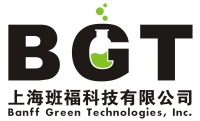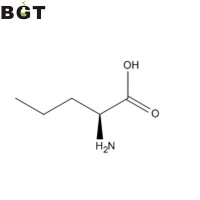What is L-Norvaline?
L-Norvaline, usually called Norvaline for short and abbreviated as Nva (according to Wikipedia), is an analog of the branched chain amino acid Valine. Its formula is CH3(CH2)2CH(NH2)CO2H (nonzwitterionic formula). The compound is an isomer of the more common amino acid Valine. Like most other α-amino acids, l-norvaline is chiral. The difference and reason for the "nor" prefix simply notes that Norvaline is one hydrogen molecule longer than the original protein Valine. Norvaline has previously been reported to be a natural component of an antifungal peptide of Bacillus subtilis. Norvaline and other modified unbranched chain amino acids have drawn attention because they seem to be incorporated in some recombinant proteins found in E. coli. Its biosynthesis has been examined. The incorporation of Nva into peptides reflects the imperfect selectivity of the associated aminoacyl-tRNA synthetase. In Miller–Urey experiments probing prebiotic synthesis of amino acids, norvaline as well as norleucine, which is 1 hydrocarbon group longer, are produced.
Benefits of L-Norvaline
L-Norvaline possesses L-Valine's normal benefits, and aside from them, L-Norvaline has been shown to positively effect circulation and nitric oxide (NO) production. It has been proposed that L-Norvaline inhibits the arginase enzyme and thus increases arginine concentrations.
As with everything else in life, in the body, there is an equal and opposite counteraction for every action. They therefore offset each other. There is such a fatal issue with NO production in the body. When NO is produced in our bodies, the bodies are at the same time producing enzymes to restrain that production.
L-Norvaline prevents the body from inhibiting the NO production because of its structural similarity to ornithine, which causes a feedback regulation on the activity of arginase. Therefore, L-Norvaline can indirectly increase the NO levels in the blood.
NO works to help the blood vessels relax. This vasodilatation could be useful in treating heart problems and lower blood pressure. So when NO is not properly produced, people may confront health problems including hypertension, obesity, diabetes, heart failure, and arteriosclerosis. According to a joint study done by the Department of Pharmacology at u Zagazig University in Egypt, and King Abdulaziz University in Saudi Arabia, Norvaline treatment helped to manage and reduce hyperinsulinaemia and hypertriglyceridaemia without causing hyperuricaemia or hypercholesterolaemia. This is a big discovery not only for each of these conditions but for L-Norvaline as an overall health supplement. This makes it a part of the preventative medicine.
In addition, during and after exercise, increased NO will lead to heightened muscle pumps and nutrient transportation because it greatly increases blood flow to heavily trained muscles. This provides enhanced muscle recovery. Thus, it helps with improving people's athletic performance.
L-Norvaline has also been shown to be active during tissue regeneration as well as overall muscle growth. As a result, L-Norvaline became a precursor in the penicillin biosynthetic pathway.
How does L-Norvaline work?
L-Norvaline is an inhibitor of the enzyme, arginase, which is an enzyme effective in breaking down and removing arginine into urea. Arginine is a precursor to NO. Thus, the restraint of arginase will increase the concentration of arginine and thus more NO will be produced.
A 22-hour study done by Chang Chiung, James Liao, and Lih Kuo from Texas A&M University tested the effects of L-Norvaline on NO in mouse macrophages. During the study, L-Norvaline and arginine were mixed to see if there would be a threshold. The macrophages were given 10 mM of L-Norvaline and arginine with dosages varying between 0.01mM and 0.8mM. According to the results, when arginine levels increased by 0.5 mM, the levels of NO increased by 28%, and 10 mM of L-Norvaline increased the levels of NO by 55%, while the 10mM of L-Norvaline did increase urea production by 50%. What's more, the experiment also showed that raising arginine levels by more than 0.5mM would abolish all effects of L-Norvaline.
The source of L-Norvaline
Since valine is an essential amino acid, and the body cannot produce it, L-Norvaline has to be obtained through the food such as dairy, meat, grains, soy and peanuts. Since it is an analog of Valine, proper protein intake is necessary for correct L-Norvaline consumption. It is assumed that L-Norvaline consumption is adequate in a well balanced diet.












